

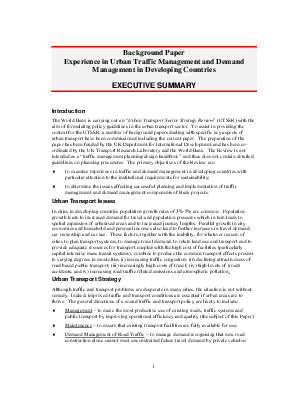

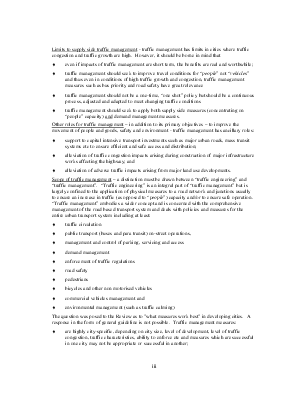
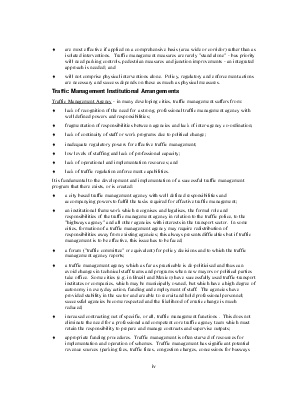









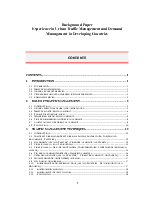












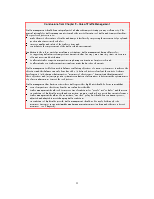











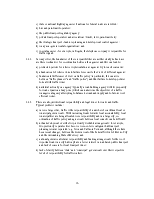
















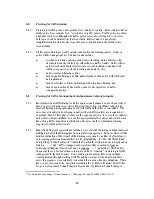


Department for International Development, UK
World Bank Urban Transport Strategy Review
Background Paper
Experience in Urban Traffic Management and
Demand Management in Developing Countries
Final Report
John A Cracknell
Traffic and Transport Consultant
27 October 2000
Background Paper
Experience in Urban Traffic Management and Demand
Management in Developing Countries
John A Cracknell
Traffic and Transport Consultant
27 October 2000
Acknowledgements
While the content of the Background Paper represents the view of the consultant, thanks and appreciation are recorded for assistance and constructive comments by various members of the traffic and transport planning profession throughout the preparation of the Paper. Particular thanks are extended to Gerhard Menckhoff
(World Bank Co-ordinator) and Phil Fouracre (Transport Research Laboratory, Department for International Development Technical
Co-ordinator) for comments on the Paper as preparation progressed and to Elmir Germani (TTC, Sao Paulo, Brazil) for contributions, review and comments at important stages in the development of the Paper.
|
Background Paper |
|
Experience in Urban Traffic Management and Demand Management in Developing Countries |
|
EXECUTIVE SUMMARY |
The World Bank is carrying out an “Urban Transport Sector Strategy Review” (UTSSR) with the aim of formulating policy guidelines in the urban transport sector. To assist in providing the context for the UTSSR, a number of background papers dealing with specific key aspects of urban transport have been commissioned including the current paper. The preparation of the paper has been funded by the UK Department for International Development and has been coordinated by the UK Transport Research Laboratory and the World Bank. The Review is not intended as a “traffic management planning/design handbook” and thus does not contain detailed guidelines on planning procedures. The primary objectives of the Review are:
♦ to examine experience in traffic and demand management in developing countries with particular attention to the institutional requirements for sustainability;
♦ to determine the issues affecting successful planning and implementation of traffic management and demand management components of Bank projects.
In cities in developing countries population growth rates of 3%-5% are common. Population growth leads to increased demand for travel and population pressures which in turn leads to spatial expansion of urbanised areas and to increased journey lengths. Parallel growth in city economies and household and personal incomes also lead to further increases in travel demand, car ownership and car use. These factors, together with the inability, for whatever reason, of cities to plan transport systems, to manage travel demand, to relate land use and transport and to provide adequate resources for transport coupled with the high cost of facilities (particularly capital intensive mass transit systems), combine to produce the common transport effects present to varying degrees in most cities (i) increasing traffic congestion; (ii) declining attractiveness of road based public transport; (iii) increasingly high costs of travel; (iv) high levels of (road) accidents; and (v) increasing road traffic related emissions and atmospheric pollution.
Although traffic and transport problems are desperate in many cities, the situation is not without remedy. Indeed, improved traffic and transport conditions are essential if urban areas are to thrive. The general directions of a sound traffic and transport policy are likely to include:
♦ Management – to make the most productive use of existing roads, traffic systems and public transport by improving operational efficiency and quality (the subject of this Paper);
♦ Maintenance – to ensure that existing transport facilities are fully available for use;
♦ Demand Management of Road Traffic – to manage demand recognising that new road construction alone cannot meet unconstrained future travel demand by private vehicles;
|
♦ |
Infrastructure Development – to correct network deficiencies and expand systems, concentrating on public transport, but with new roads where essential; |
|
♦ |
Adoption of Objective and Systematic Evaluation – to evaluate transport investments objectively ensuring economic, financial, operational and environmental feasibility to ensure that investments are prioritised, targeted within realistic budgets and are sustainable; |
|
♦ |
Environmental Management – to reduce vehicle emissions and other adverse impacts and to encourage less damaging modes such as walking and non motorized vehicles; |
|
♦ |
Safety – to reduce the social and economic drain arising from accidents by improving the safety and security of the road based, transport system; |
|
♦ |
Financing – to improve cost recovery in the transport sector including use of innovative policies for private sector participation in the supply and operation of transport services, by application of realistic road user charges and realistic public transport tariffs; and |
|
♦ |
Land Use-Transport Planning and Integration – to improve city planning, in particular the integration between transport and land use and social and economic activities. |
Уважаемый посетитель!
Чтобы распечатать файл, скачайте его (в формате Word).
Ссылка на скачивание - внизу страницы.